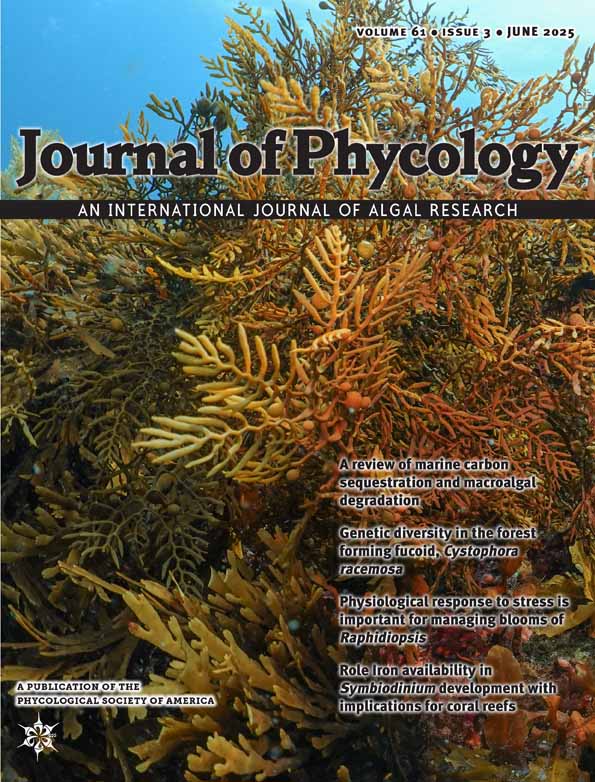INTERACTIVE EFFECTS OF COPPER AND SILICIC ACID ON RESTING SPORE FORMATION AND VIABILITY IN A MARINE DIATOM1
Accepted: 27 October 1986
We thank Jan E. Rines for taxonomic advice, Paul E. Hargraves and Fred W. French for helpful discussions, and Nicholas S. Fisher for his comments on the draft manuscript. This research was supported by grants from the Hudson River Foundation, the U.S. Environmental Protection Agency and the New York Sea Grant Institute.
ABSTRACT
The toxic effects of copper on resting spore formation and viability in the marine diatom Chaetoceros protuberans Lauder were determined both with and without silicic acid added to the medium. With silicic acid available, partial inhibition of resting spore formation occurred only at the highest cupric ion activity (pCu 8.6), while the percentage of cells forming spores at pCu's 10.2 and 11.3 was nearly the same as in the controls. Without silicic acid added to the medium, sporulation was completely inhibited at pCu 8.6 and greatly inhibited, at pCu 10.2. At pCu 11.3 and in the controls, the rate of spore formation was less than 50%. The results indicate that the inhibition of resting spore formation by copper is related to the concentration of silicic acid available to cells of C protuberans. This is consistent with previous studies which show that copper toxicity during vegetative growth involves interference with silicification in diatoms and is a Junction of the silicic acid concentration of the medium.
Viable resting spores of C. protuberans were still present in cultures following exposure to elevated copper concentrations during a 100-day incubation period. This indicates that resting spores can serve to enhance diatom survival in areas polluted by heavy metals.




